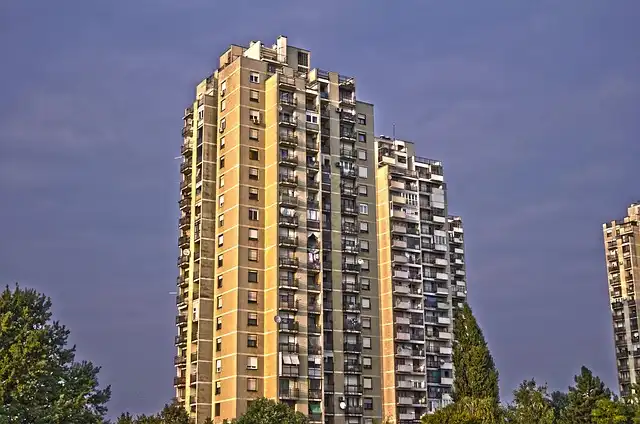High-Rise Housing: Myths, Realities, and Lessons Unlearned in Britain

Unmasking myths around high-rise British housing: tenant action, safety concerns from Ronan Point to Grenfell, and the social impact. Lessons on safety, investment, and tenant views remain unlearned.
One of her main objectives is to unmask the myth, perpetuated by Margaret Thatcher and others, that high-rise real estate resulted in passive renters lacking initiative. Rather, she records how local and nationwide action by tenants was constantly imaginative, resourceful and visionary, bring about types of teamwork, democratisation and engagement.
Between 2007 and 2010 Southwark council accredited 76 movies to be shot on the high-rise Heygate estate in London’s Walworth location, giving a gritty background for dramas of hardship and criminal activity. This “theater of preconception”, a term created by historian of modern-day Britain Holly Smith, had involved dominate the narrative of high-rise social real estate.
The Heygate Estate: A Theater of Preconception
A vital contribution of guide is to obtain “within the walls” of high-rise Britain and document the lives of its residents. Smith documents their sensations regarding these complicated structures, which vary from affection to uncertainty, to hostility.
In 1968, the investigation into what went wrong at Ronan Point located that a gas explosion had actually been able to blow out 3 load-bearing precast concrete wall surface panels. This activated the disastrous collapse of a corner of the tower.
Ronan Point Disaster: A Gas Explosion and Systemic Failure
It didn’t chime with the truth of those that live in these locations. A years previously in Liverpool, mainly elderly homeowners from the city’s skyscraper tower obstructs tried to “test perceptions of skyscraper living” via the creation of Tenantspin television productions.
Engineer Sam Webb, who campaigned to enhance safety in tower obstructs after the Ronan Point disaster, gives a workshop to lessees at the first National Tower Blocks Meeting in 1983. Tower Blocks UK/Bishopsgate Archives
The failure to comprehend this is tragically shown in both catastrophes that strongly bookmark a vital period in this history. The first is the partial collapse of the Ronan Point tower block in eastern London in 1968 just 2 months after it opened up, which killed four people. The 2nd is the Grenfell Tower fire in central London in 2017 in which at the very least 72 people lost their lives.
Grenfell Tower Fire: A Tragic Consequence of Neglect
There have constantly been those who romanticised skyscraper living. For example, the French designer Le Corbusier called it a “flirtation with the stars”. Nonetheless, such views were constantly offset by the pragmatic necessities of neighborhood authorities.
Smith makes the crucial point that it is not the high-rise’s design that is inherently broken, yet the estimates that we placed on it. She contrasts, for example, the prominent cultural denigration of skyscraper council housing with New Labour’s portrayal of brand-new, extravagant, pricey and extremely personal industry skyscraper housing. These structures became typical of growing cities in a prosperous Britain.
The Ministry of Real Estate and City government told occupants to “leave the worrying to us”. Smith describes years of tenants raising concerns concerning possible future disasters. Lessee banners stating that “we stay in anxiety” were a chilling foretelling of what was to find at Grenfell and after.
Looking for something excellent? Puncture the sound with a meticulously curated option of the most recent releases, real-time occasions and exhibits, straight to your inbox every fortnight, on Fridays. Join here.
Tenant Perspectives: Memories and Attachments
One renter advises us just how these towers were much-loved homes loaded with close friends and memories, where individuals and family members were strongly spent, despite their stress and constraints: “Throughout 35 years you come to be affixed to the 4 walls even if they’re not excellent walls.”
John Flint is not currently obtaining financing from an organisation. He has actually formerly received study funding from the UKRI, Joseph Rowntree Structure, Nuffield Structure, a number of UK Government Departments, the Scottish Exec/ Federal Government, the Welsh Assembly Federal government and local authorities He is a Trustee of the Real Estate Studies Charitable Depend On.
The background of the social housing skyscraper has actually seen them exist in many kinds, with differing styles and organisational frameworks. She likewise provides a nuanced account of the many oppositions in the skyscraper, which “has signified modernity and exclusivity, degeneration and area, advantage and disadvantage, deluxe and privation”.
The priest of housing, Anthony Greenwood, guided that the query’s “terms of referral should be very carefully thought about to make certain that they implied no blame on the part of the regional authority”. And, in spite of the event exposing the vulnerability in the design, the federal government continued to authorize the precast panels so as to create no alarm to locals staying in similar structures.
Lessons Unlearned: Safety, Investment, and Tenant Voices
That is the key message from this publication: that there are lessons from the history of high-rise real estate in Britain concerning safety and security, investment, dispossession and the point of views of tenants, that still have actually not been totally learned.
High-rise real estate was seen as a crucible for forging a brand-new welfare state offering radical new ways of living. The book highlights exactly how knocked down tower blocks became seen by some analysts as the gravestones or damages of this desire.
Also throughout the boom durations of building and construction of social real estate between 1945 and 1976, flats comprised just a fifth of the houses built and the majority were in buildings of four floors or less. Provided exactly how couple of high-rises exist, it is remarkable how these buildings became such an effective sign of social progression and of the troubles and development of the welfare state.
There have constantly been those who romanticised skyscraper living. Smith makes the vital factor that it is not the high-rise’s design that is inherently damaged, yet the estimates that we put on it. She contrasts, for instance, the preferred social disparagement of skyscraper council housing with New Labour’s portrayal of new, extravagant, extremely exclusive and costly industry skyscraper housing. The initial is the partial collapse of the Ronan Factor tower block in eastern London in 1968 just two months after it opened up, which killed 4 individuals. The Ministry of Real Estate and Neighborhood Government told occupants to “leave the fretting to us”.
1 Grenfell Tower2 high-rise housing
3 Ronan Point
4 social housing
5 tenant action
6 urban planning
« Social Media Trends: Authors Shift to TikTok & InstagramFrankfurt Book Fair 2025: Hot Titles & Publishing Trends »
